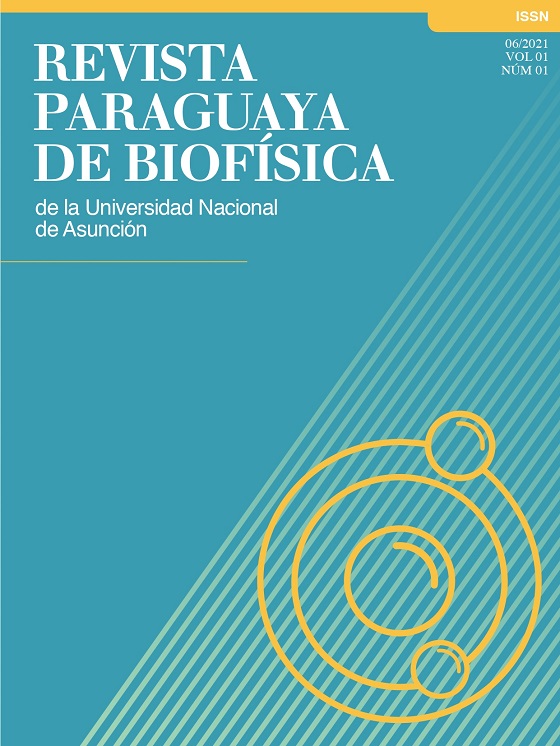Sedentary frequency in first year medical students
Keywords:
Sedentary, medical students, effects of sedentary lifestyleAbstract
Introduction: Sedentary lifestyle is defined as a lifestyle that lacks physical activity. Those who perform less than 90 minutes of physical activity per week are considered inactive, according to the World Health Organization.
Methodology: Observational, descriptive, cross-sectional study. The study period was from September 15 to October 20, 2018, carried out at the facilities of the FCMUNA.
Results: 100 students of the first year of FCM-UNA were surveyed. The distribution of the sample by gender was 58% women and 42% men. Of the population, 68% said they lead a sedentary life, where the majority are women; 71% of individuals have a BMI between 18.5 and 24.5. It is also observed that 53% report back pain compared to 20% who say they have joint pain.
Conclusion: The majority of the respondents claimed to lead a sedentary life, among these prevails the presence of back pain before joint pain. The comparison of the BMI between the sedentary and the non-sedentary population showed us a predominance of normal weight, this is due to the fact that in the beginning years of this lifestyle there is not yet a marked correlation between sedentary lifestyle and body weight. For this reason it is suggested to carry out the same study in the future in higher education courses in order to demonstrate the existence of a progressive advance.
Downloads
References
(1) Fraga AB. El sedentarismo es... Saúde E Soc. 2016;25:716-20.
(2) OMS | Inactividad física: un problema de salud pública mundial [Internet]. [citado 1 de noviembre de 2018]. Disponible en: https://www.who.int/dietphysicalacti- vity/factsheet_inactivity/es/
(3) Fox M. What is sedentarism? J Acad Nutr Diet. 2012;112(8):1124-8.
(4) OMS | Informe sobre la salud en el mundo 2002 - Reducir los riesgos y promover una vida sana [Internet]. WHO. [citado 1 de noviembre de 2018]. Disponible en: https://www.who.int/whr/2002/es/
(5) Bernaards CM, Hildebrandt VH, Hendriksen IJM. Correlates of sedentary time in different age groups: results from a large cross sectional Dutch survey. BMC Public Health [Internet]. 2016 [citado 1 de noviembre de 2018];16. Disponible en: https://www.ncbi.nlm.nih.gov/pmc/articles/PMC5080694/
(6) O’Donoghue G, Perchoux C, Mensah K, Lakerveld J, van der Ploeg H, Bernaards C, et al. A systematic review of correlates of sedentary behaviour in adults aged 18–65 years: a socio-ecological approach. BMC Public Health [Internet]. 2016 [citado 1 de noviembre de 2018];16. Disponible en: https://www.ncbi.nlm.nih. gov/pmc/articles/PMC4756464/
(7) Morales G, Balboa-Castillo T, Muñoz S, Belmar C, Soto Á, Schifferli I, et al. Asociación entre factores de riesgo cardiometabólicos, actividad física y sedenta- rismo en universitarios chilenos. Nutr Hosp. 2017;34(6):1345-52.
(8) Rollo S, Gaston A, Prapavessis H. Cognitive and Motivational Factors Associated with Sedentary Behavior: A Systematic Review. AIMS Public Health. 2016;3(4):956-84.
(9) Contreras Fernández JJ, Espinoza Aravena RM, Dighero Eberhard B, Drullinsky Alvo D, Liendo Verdugo R, Soza Rex F. Actitud sedentaria y factores asociados en estudiantes de Medicina. Rev Andal Med Deporte [Internet]. 2009 [citado 1 denoviembrede 2018];2(4). Disponibleen: http://www.redalyc.org/resumen.oa? id=323327660006
Downloads
Published
How to Cite
Issue
Section
License
Copyright (c) 2021 Rossana Belén Benítez Cantero, Fabiola Michelle Benítez Galeano, José Anderson Benítez Soria, Juan Carlos Benítez Venialgo, Tania Karina Bobadilla Desvar, Gabriela Bergottini Maldonado, Brian Alexis Britos Moulard, Dahiana Carbajal Silvera, Sara Magalí Cárdenas Areco, Diego Javier González Hermosa

This work is licensed under a Creative Commons Attribution 4.0 International License.





